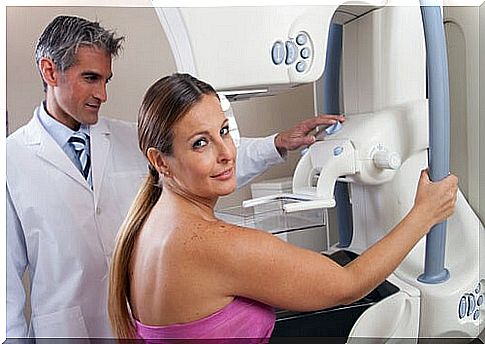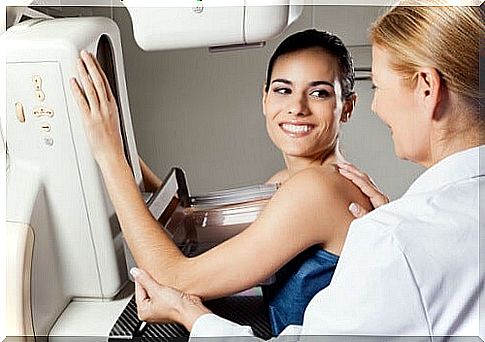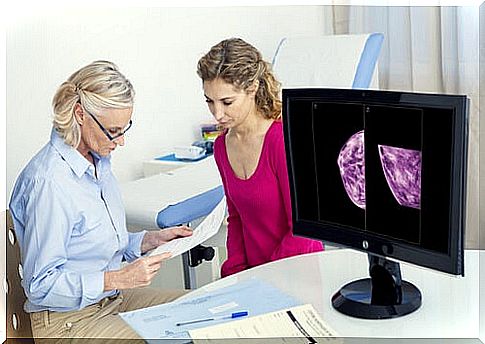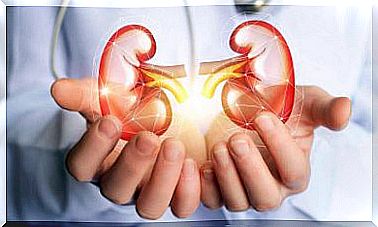7 Things To Expect At Your First Mammogram
The age at which we undergo our first mammogram will be around 40 years, although it will also depend on our family history and previous medical history.

If you are between 35 and 40 years old, you are about to experience your first mammogram. We understand that you may feel nervous or anxious not knowing what to expect from this exam. However, it is essential not to postpone or avoid it.
Well, breast cancer is the second most common type of cancer in the world and the most common among women. However, s If it is diagnosed early, chances are high for a cure.
In this sense, the main forms of detection are annual mammograms and clinical examinations done with a specialist.
It should be noted that mammograms are not recommended for women under 45 years of age. This is because its density of breast tissue makes the interpretation of the results more difficult. Consequently, it also makes it difficult to detect problems. Also, the incidence of breast cancer at this stage is much lower.
If you are about to have your first mammogram or just want to know about it, take note of these tips.
1. You will feel an uncomfortable compression

To obtain high-quality mammograms and to expose the patient as little as possible to radiation, during the breast exam a slight compression of the breasts is necessary .
In some women this can cause pain and in others only mild discomfort.
This symptom does not imply anything negative by itself. This variation of sensations is very common, because each woman has a very individual pain threshold.
If you feel pain, just remember that it is for a few minutes and then it will be over.
2. Avoid scheduling your first mammogram days before your period
Preferably, mammography should be performed during the second and third weeks of the menstrual cycle . In this period there is less density of glandular tissue of the breasts, which helps to make the examination more detailed and with less discomfort.
In addition to that, in the period of menstruation or in the next few weeks, the breasts are usually more sensitive due to hormonal alterations. This can increase discomfort and cause pain during the exam.
3. Notify if you have silicone implants
Silicone prostheses can interfere with the visualization of the breasts on x-ray. That is why it is extremely important to inform the technician who will perform the exam that you have implants.
The specialist should adjust the radiation doses, so that the glands of the breasts are better visualized. You will also find that the position will be slightly different, depending on the size of the implants.
4. Wear two separate pieces of clothing
Normally you should remove the entire upper part of your clothing and wear a disposable gown that will be provided by the radiologist to proceed with your first mammogram.
Then, it is best to avoid unique pieces, such as dresses or hard-to-remove clothing.
Ideally, you should wear a button-down shirt on the day of the test, as it is easy to remove and put it back on. Think that wearing extra or difficult to remove clothing can also waste time.
So, if you’re short on time, wear something practical.
5. Avoid some underarm cosmetics
The patient should not pass any type of product on the breasts or in the armpits on the day of the examination.
They could produce images in the result that would confuse your doctor. This could influence your misdiagnosis.
In this sense, we must pay special attention to those products that leave residues, such as creams, deodorants and powders.
To avoid any doubt, you can ask your doctor if your regular deodorant causes a problem.
If you are having your mammogram in the afternoon and you don’t want to go through the day without deodorant, you can go to the bathroom before the exam and wash your armpits. When finished, apply deodorant again and you will be ready.
6. Get on comfortably

At the time of the exam allow the radiologist to position you correctly and let him or her know if you feel uncomfortable .
The positioning of the breasts in the appliance is very important so that the entire gland is examined. For this to occur correctly, the patient needs to feel relaxed.
Specialists point out that any change in position during the exam can affect the result. That is why you should talk with the technician and seek together the best position for your first mammogram.
You must communicate any limitations you may have , such as muscle stiffness or difficulties in lifting the arms, among others.
If in any way adopting the indicated position is impossible, which happens in rare cases, other methods of doing the examination, such as ultrasound, can be sought.
7. Only the specialist can explain the results

It is essential that you know that the radiologist is the professional who will perform the exam, but he is not trained to interpret the results.
The radiologist can describe the main factors found in the mammogram using specific terms for each type of injury.
However, only your specialist doctor can explain the results to you in more detail. It is important that you do not get scared by any weird terms you see or worry about too much.
Give your doctor time to see the results and explain the real situation to you.
8. Stay calm during your first mammogram
On your first mammogram, you may feel anxious, nervous, or confused. However, if you want to have an optimal quality of life, it is a reality from which you will not be able to escape.
It’s essential to prepare yourself anytime in your 40s or earlier if you have any risk factors.
So, take a look at the things to expect in this exam, put your worries behind you, and discuss with your doctor the best time to perform this procedure.
On the other hand, it is very important to emphasize that if you suspect or feel the presence of any foreign mass at the breast level, you must go to the doctor; it doesn’t matter how old you are.









